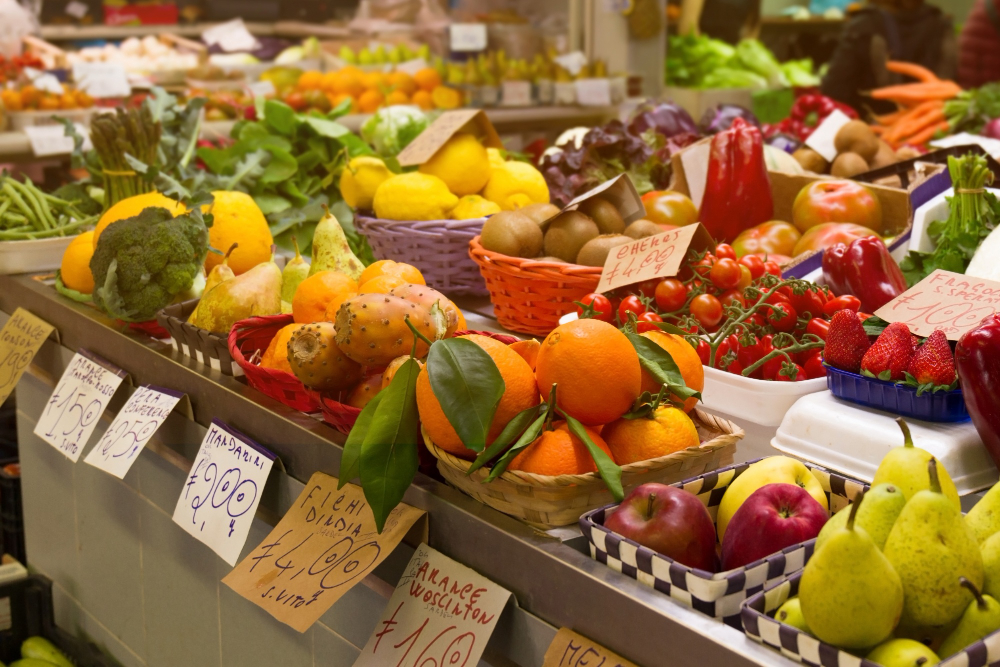August 28, 2023
The World Bank’s food price index has been relatively stable during the past seven months as declines in the prices of grains offset increases in other food items. However, the index remains over 50 percent above its pre-pandemic nominal average (2015-19). Despite the non-renewal of the Black Sea Grain Initiative and India’s export ban of non-basmati rice, the food price index is expected to average lower in 2023 compared to 2022. The decline will be driven by lower oils and meals and (less so) grain prices, in response to better crop yields for the crop season that just started (August 2023 to July 2024).
Global supplies of grains are expected to improve in 2023-24 due to record-level production of wheat, maize, and rice. Global wheat production is forecasted to reach a record high, driven by Argentina’s recovery from the significant drought, near-record production in Canada, and large anticipated harvests in China, the EU, and India. A record-high global maize production is projected in 2023-24 as well, led by expected increases in Argentina, China, the European Union, and the United States. Pakistan’s rice production and exports will recover in 2023-24, following last season’s poor harvest due to extreme flooding. Before its recent rice export ban of non-basmati rice, India was expected to contribute more than 40 percent of world rice exports in the ongoing season, similar to last season’s share. The ban accounts for nearly half of India’s rice exports and will tighten global rice markets. Global grain supplies, on the other hand, are expected to grow by about 60 million tons in 2023-24, slightly above the long-term average annual growth. This favorable global grain stocks eases part of the price pressure from the breakdown of the Black Sea Grain Initiative.
Global edible oil supplies are expected to improve in 2023-24. Higher soybean production in the United States, higher sunflower seed production in the European Union, and elevated rapeseed production in the European Union and Canada will deliver above-average global edible oil supply growth. Global edible oil supplies are expected to grow by 7.2 million in 2023-24, 1.7 million tons above the long-term average growth and the highest since 2019.
Stock-to-use (S/U) ratios for key commodities have stabilized. The S/U ratio, a rough indicator of supply relative to projected demand, is expected to fall slightly during the ongoing season for rice and wheat but is expected to increase for maize. Although the ratios are lower than their recent peaks (in part due to COVID-19-related supply disruptions and the war in Ukraine), they are much higher than their record lows during the food price spike of 2010-11.
Although global food commodity prices fell in the first quarter of 2023 compared to the previous year, many regions experienced a rise in domestic food prices. Local food prices increased by 10.1 percent in the first half of 2023 (year on year) in half of emerging market and developing economies. High food price inflation was more prevalent in Europe and Central Asia (ECA), with more than 16.7 percent observed in half of the countries in the region. In addition, food price inflation was more than 13.4 percent in half of the Sub-Saharan African countries and more than 11.5 percent in half of Latin American countries. Some countries experienced extreme inflation in the second half of 2023. For example, food price inflation exceeded 100 percent in Argentina, Lebanon, Venezuela, and Zimbabwe and was over 30 percent in many countries. High food price inflation is a significant concern for emerging and developing economies, as food makes up a third of households’ expenses.
Source: World Bank
Legal Notice: The information in this article is intended for information purposes only. It is not intended for professional information purposes specific to a person or an institution. Every institution has different requirements because of its own circumstances even though they bear a resemblance to each other. Consequently, it is your interest to consult on an expert before taking a decision based on information stated in this article and putting into practice. Neither Karen Audit nor related person or institutions are not responsible for any damages or losses that might occur in consequence of the use of the information in this article by private or formal, real or legal person and institutions.






